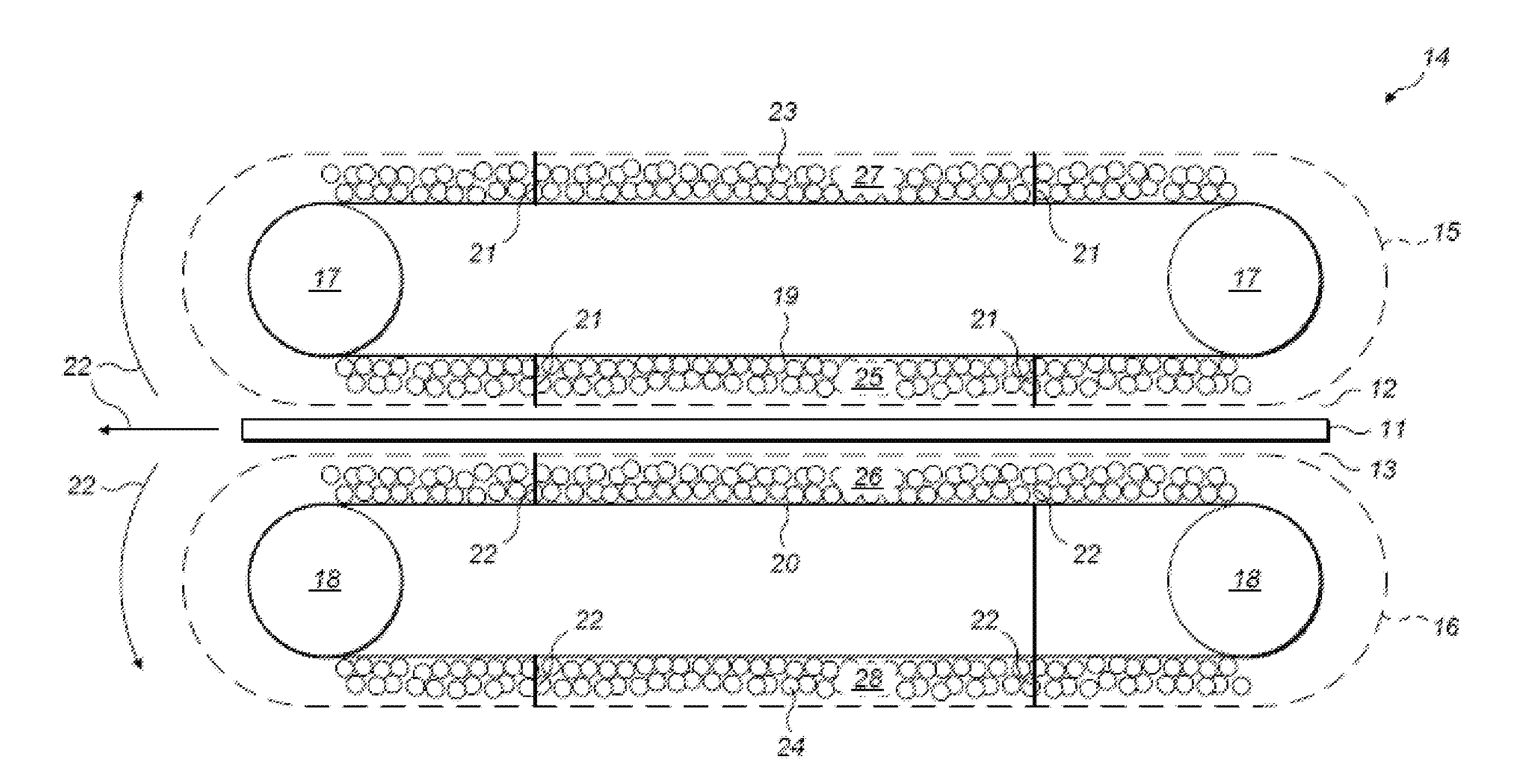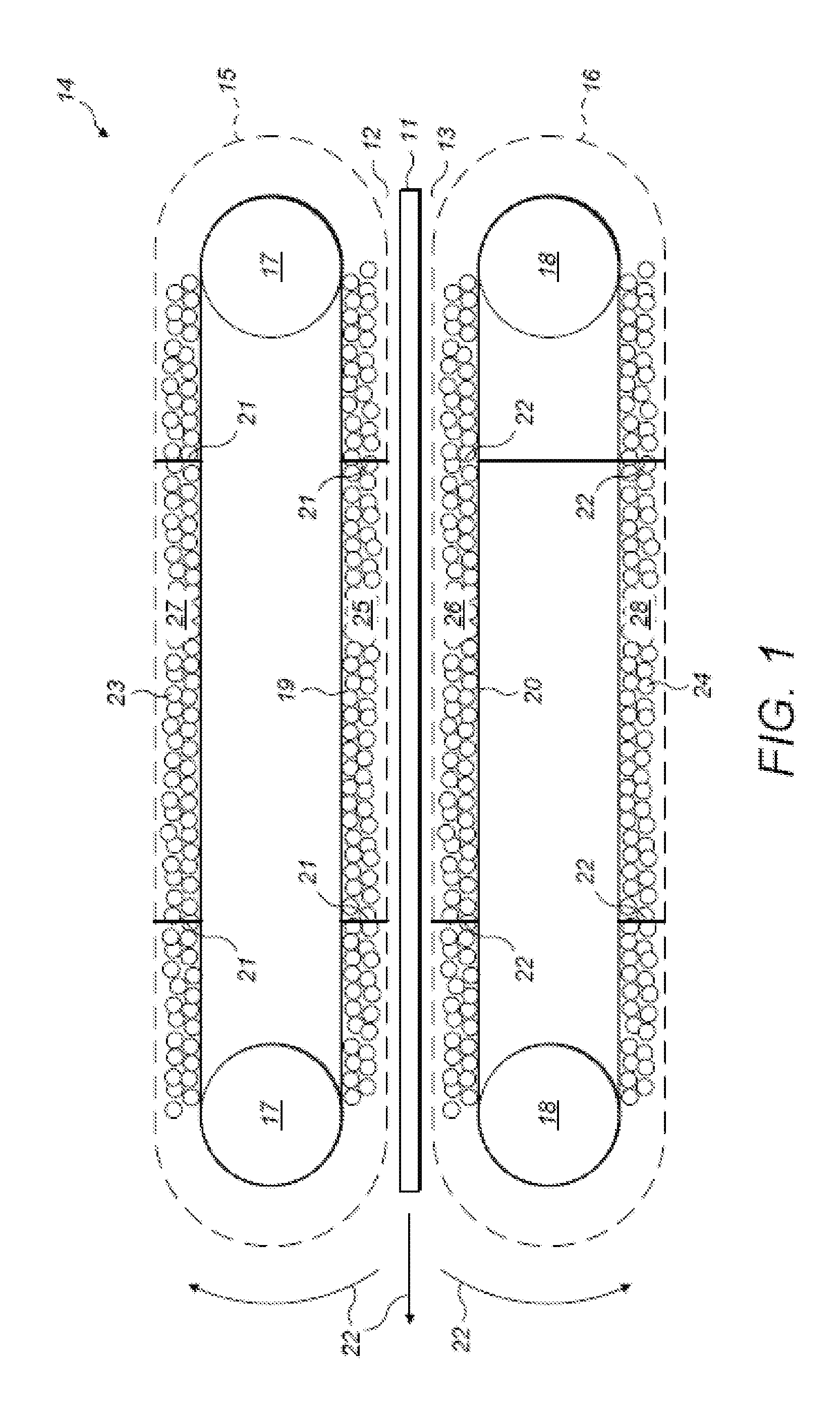Manufacturing soluble beverage products
- Summary
- Abstract
- Description
- Claims
- Application Information
AI Technical Summary
Benefits of technology
Problems solved by technology
Method used
Image
Examples
example 1
[0085]Aroma is recovered from the soluble coffee process in the form of coffee oil. Concentrated coffee extract with coffee solids by weight of 30% is formed by concentrating weak coffee extract derived from a water extraction of roast and ground coffee. The coffee oil and coffee extract are combined.
[0086]The coffee oil and coffee extract are cooled and foamed, i.e. aerated, to a density of 1080 grams per litre, which achieves a dried product density of between 200 and 300 grams per litre. This viscous foamed extract is poured onto a flat surface to produce a sheet 1.5 mm thick and frozen to −20° C.
[0087]A 20 mm layer of silica dioxide is inserted into the bottom of a tray and a first fine wire mesh is placed on top of the silica dioxide. A first 5 mm layer of soluble coffee powder is poured over the mesh and the sheet placed on top of the soluble coffee powder. A second 5 mm layer of soluble coffee powder is poured over the upper face of the sheet and a second fine wire mesh is pl...
example 2
[0089]Aroma is recovered from the soluble coffee process in the form of an aqueous based aroma composition utilising the method described in Example 1 of U.S. Pat. No. 7,470,443. It is noted that the aqueous aroma can be modified or concentrated further by concentrating or fractionation. Concentrated coffee extract with coffee solids by weight of 50% is formed by concentrating weak coffee extract derived from a water extraction of roast and ground coffee. The aroma composition and coffee extract are combined.
[0090]The aroma composition and coffee extract are cooled and foamed, i.e. aerated, to a density of 650 grams per litre. This viscous foamed extract is poured onto a flat surface to produce a sheet 4 mm thick and frozen to −50° C.
[0091]The tray is arranged in a similar manner to Example 1, except that 40 mm layers of silica dioxide are used. The apparatus is left to dry for eight hours at atmospheric temperature. The sheet is subsequently removed and cut into 2 mm×2 mmm sections...
example 3
[0092]Aroma is recovered from the soluble coffee process by dissolving freeze dried coffee into water from a range of 85% to 50% by weight solids. Concentrated coffee extract with coffee solids by weight of 85% is formed by concentrating weak coffee extract derived from a water extraction of roast and ground coffee. The aroma and coffee extract are combined.
[0093]The coffee oil and coffee extract are cooled and foamed, i.e. aerated, to a density of 382 grams per litre. This viscous foamed extract is poured onto a flat surface to produce a sheet 2 mm thick.
[0094]The tray is arranged in a similar manner to Examples 1 and 2, and 30 mm layers of silica dioxide are used. The apparatus is left to dry for two hours at atmospheric temperature. The sheet is subsequently removed and cut into 2 mm×2 mmm sections, thereby forming aromatised granules of soluble coffee product.
PUM
 Login to View More
Login to View More Abstract
Description
Claims
Application Information
 Login to View More
Login to View More - R&D
- Intellectual Property
- Life Sciences
- Materials
- Tech Scout
- Unparalleled Data Quality
- Higher Quality Content
- 60% Fewer Hallucinations
Browse by: Latest US Patents, China's latest patents, Technical Efficacy Thesaurus, Application Domain, Technology Topic, Popular Technical Reports.
© 2025 PatSnap. All rights reserved.Legal|Privacy policy|Modern Slavery Act Transparency Statement|Sitemap|About US| Contact US: help@patsnap.com


